
It’s a great article! It starts out covering the classic-era games everyone remembers, Donkey Kong, Donkey Kong Jr. and Mario Bros., and then slowly gets less and less well-known. It even mentions the two Gottlieb pinball games!
The Flipside of Gaming

It’s a great article! It starts out covering the classic-era games everyone remembers, Donkey Kong, Donkey Kong Jr. and Mario Bros., and then slowly gets less and less well-known. It even mentions the two Gottlieb pinball games!

“We scour the Earth web for indie, retro, and niche gaming news so you don’t have to, drebnar!” – your faithful reporter
Lego is banning new Ideas projects based on The Legend of Zelda, according to Chris Wharfe at Brick Fanatics. The reasoning given is a bit vague. It could either be because Lego is working on their own Zelda sets (and they already have a working relationship with Nintendo, making the popular Super Mario sets), or it could be that the rights to Zelda models were sold to someone else. Either way, it may mean we get Zelda models through some company eventually.
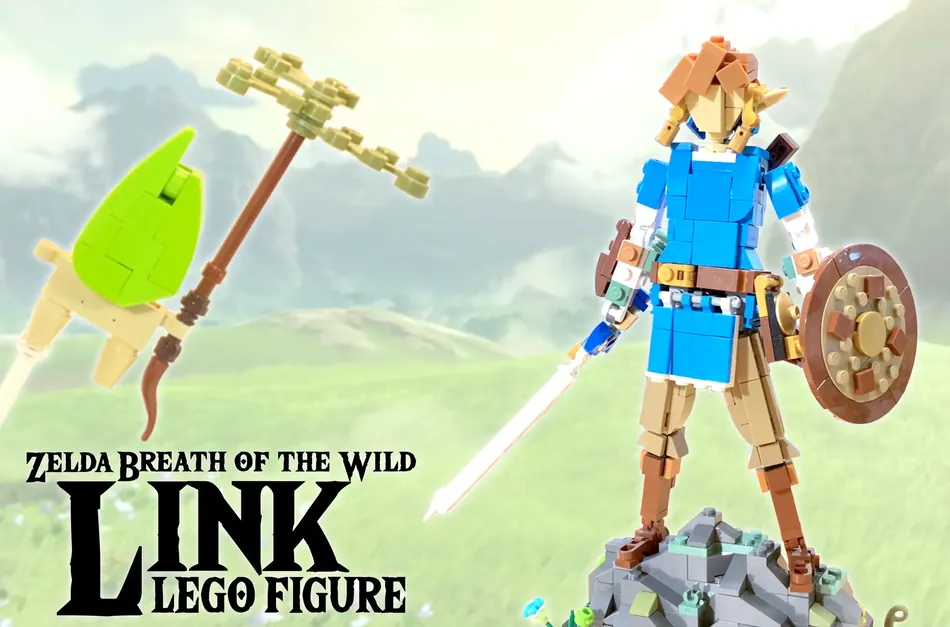
PC Gamer, Andy Chalk: Final Fantasy XVI’s using excuses to not have Black characters. Specifically, by claiming the game’s world is based on medieval Europe, despite Black people existing there. Grumble, grumble!
Old school blogger Mark Frauenfelder of good ol’ Boing Boing mentions illustrator Hollie Mengert discovered her work was used without her permission to make AI-generated work, and the model that utilized her work released as open source by MysteryInc152. It links to an original article by Andy Baio at Waxy. Someone explain to me how AI-generated work isn’t legally a derivative work based on every work it’s trained on? That seems like it’s just obvious.
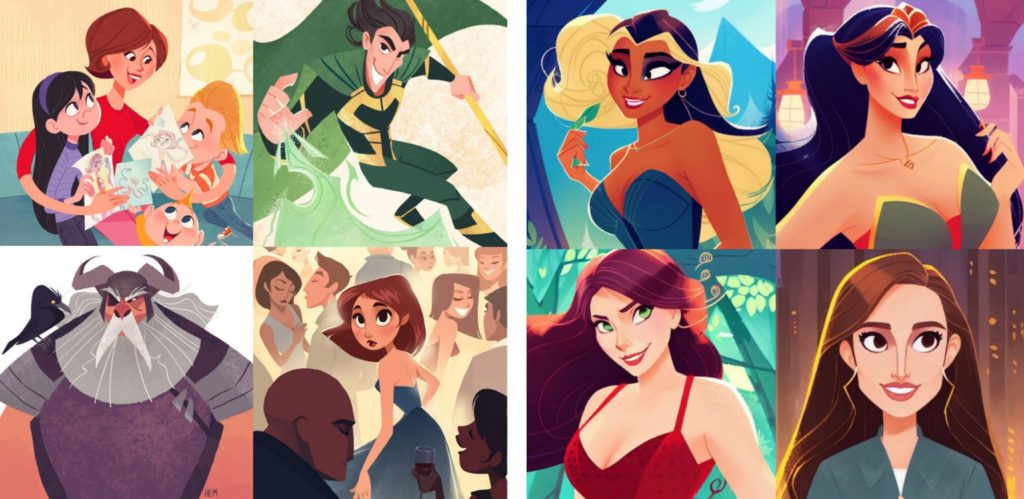
Rich Stanton at PC Gamer writes that EA’s been granted a patent on game controls that change based on how well the player does. Software patents are bad on principle, that is a horse that I will always flog despite this awful situation having existed for literally decades now, but getting past that, for now. This seems at first like just another version of adaptive difficulty, which is also something that seems like it’s kind of a problem when it happens without notifying the player or giving them a say in it. I know I know, “Kent Drebnar, get with the 21st Century.” Maybe I’ve been hanging out with the Gripe Monster too much lately. The article goes back into the history of these kinds of effort, going all the way back to Compile’s Zanac, although I would argue that’s not so much adaptive difficulty as a system that the player can strategize to manipulate. Zanac is terrific, by the way.
Bryan at Nintendo Everything mentions that Sega is hiring a Sonic “loremaster,” presumably someone who knows the history of the many forms of the character. Said role will assist in creating new content and characters in the Sonic universe. Sounds like a tall order given the many varied and contradictory versions of the property there’s been, but I’m sure there are people out there who are up to it. Good luck, whoever they pick!

I promised I’d explain the origin of the Football Fetus. It’s from the Breaking Madden Season 1 Super Bowl, which is still one of the funniest bits of game writing in memory. Jon Bois does good work.
Half Denver Bronco, half Seattle Seahawk, all madness. It was spontaneously generated by Madden 2013 when Jon Bois set up an experiment to engineer the biggest drubbing that the software could generate. The Broncos fought the Seahawks for the Super Bowl that year, so he set up a match between them, and decided randomly which team would be the Gods, and which would be the Worms. The Gods, the Seahawks, would all have maximum stats in every category. The Worms, the Broncos, would all have the minimum stats.
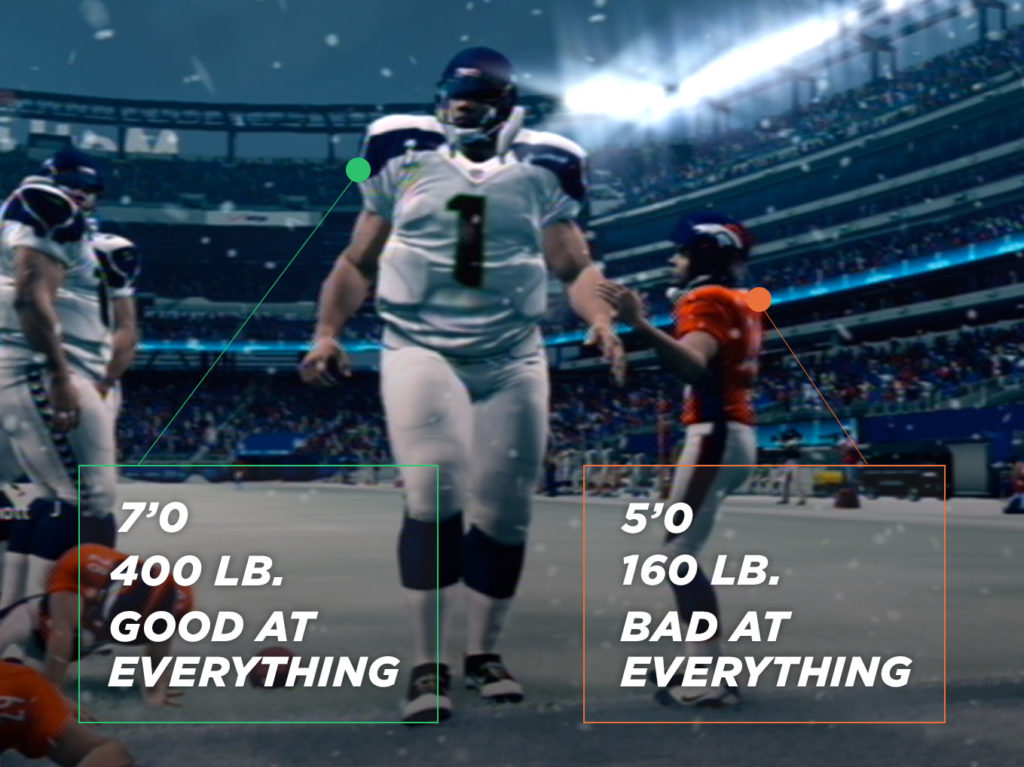
In particular, all the Broncos had the minimum stat in Awareness, which affects their AI, and which seems intended by the developers to create improvised video game comedy. A low Awareness saps a player of the ability to function on any competent level, for any football-related purpose. A low Awareness produces people who willingly walk into tackles. A low Awareness stat produces men who can only say huh.
Further, durability stats were all minimized for the Broncos, so they kept getting injured, but they ran out of replacement players they could field, so they kept on playing, getting more and more hurt. Infinitely hurt. People don’t die in Madden. It would have been a kindness if they could. Oh also, all the penalties were turned off.
Just to make the obliteration complete, Jon took control of the Seahawks. He began to rack up points. Before the first quarter was over, he discovered that Madden 2013, a game for the Xbox 360, still tracked scores with a single byte. The Seahawks’ score froze at 255, although some places listed it as 256. I suppose we should be thankful it had bounds checking, and didn’t wrap back around to zero.
So Jon took a cursory count of score himself. Somewhere around 1,500 points, the game called a penalty even though they had been disabled. Viewing the footage on the play presented, not video, but a single frame, locked in time, of the Football Fetus, resting in the center of the field. A creature of chaos. A mandala of nonsense. Procedural generation at its finest.

While entertaining, still, things like this shouldn’t happen. Jon Bois is generally careful not to tear too hard into EA’s programmers, and truthfully I don’t want to either, they only have jobs to do. But EA Sports is the only source for sports games for multiple fields. If you want to play with pro players, if it’s the NFL, you can only get it from EA Sports, and it’s been that way since 2005. It’s a monopoly, and it’s inevitable that craftsmanship would decline. 2K Sports, these days, is the same with the NBA.
How sports games have been ruined by monopolies is a story for another time. There’s an article from a student newspaper from 2021, by Blake Malick, decrying their sorry state. Presumably I’ll weigh in in more detail myself someday, but that would require caring about sports games, which is something I am not prepared at this time to do. I will leave that to Jon Bois and the other inhabitants of the Fumble Dimension.
Anyway, still, bad craftsmanship in a game can be hilarious, and so it is in Breaking Madden. Please, enjoy. And here’s the rest of Breaking Madden, which includes the saga of Clarence BEEFTANK. Ah, BEEFTANK. We should look back on his storied career at a later time too.
Street Fighter II has some really complex spritework! Its characters don’t actually use traditional sprites, but more what amounts to custom tile layers for each one. This helped unlock characters from being mostly rectangular, and allow them to have poses with radically different shapes.
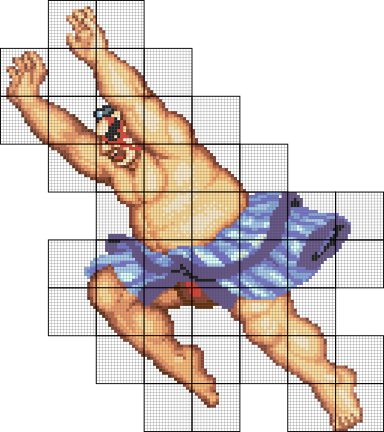
Fabian Sanglard has a great article about how character art was created for that system that’s well worth your time to have a look at. Well, maybe it’s worth it? I don’t know you. For all I know you’re looking for sewing advice. This is probably the wrong site for that. No offense to all you clothes-makers out there.
ROMs were expensive, and Street Fighter II required a lot of them, so it was important to make the most out of each one. A big rectangular shape around Edmond Honda would contain a lot of empty, wasted space. Imagine how much space they would have wasted with Dhalsim’s long stretchy legs! With this system, they only had to include the graphics data that would actually contain pixels.
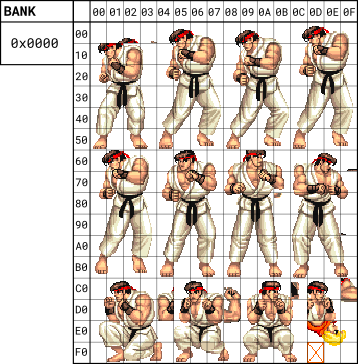
This was in 1991, mind you. More recent development practices would probably have the data be compressed in storage, which would take care of all those empty pixels, or at least they could make a tool to handle figuring out which tiles should contain data. What the Street Fighter II artists had to do was create physical representations of each character on a physical board, chop that up into squares, and figure out what each tile had to contain, a laborious process.
Fabian reckons this system was used for other CPS-1 games, going back to at least Forgotten Worlds. Looking at the tile layouts of CPS-2 titles, it seems a lot more evident that they used a packing tool to handle fitting their characters into the memory space. For more info, please go check out the article!
Every song on the soundtrack of Jet Grind Radio (a.k.a. Jet Set Radio) is out of sight. One of the most memorable (they’re all memorable, but even among this group) is Super Brothers by Guitar Vader, a cheeky riff (in lyrics) on Super Mario Bros., in a Sega game.
That’s all. That’s enough.
How much of Myst can you fit onto an Apple II with three 5 1/4” floppy disks? As it turns out, if you don’t really care about screen resolution, nearly all of it.
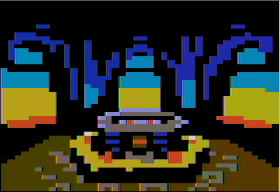
In the following Youtube video, you can watch a playthrough of the first fifth of the game. A complete run is in the playlist linked here. Warning: prepare your ears for mayhem.
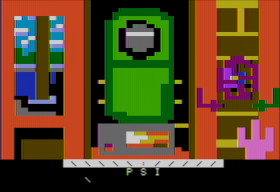
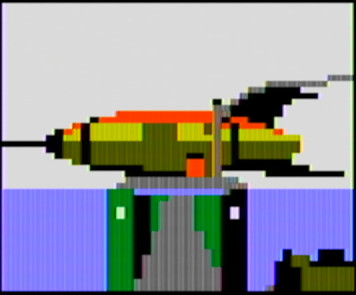
We’re going to spotlight some of the talks from this year’s Roguelike Celebration over the coming weeks, which is always crammed full of wonderful talks! The first one I’m directing your hungry gaze towards is Jeremy Rose talking about his strategy guide for Cataclysm: Dark Days Ahead.
Strategy guides for classic roguelikes are not like strategy guides for other genres of games. It is technically possible to win at NetHack without perusing spoilers, but it will probably take you a long long time. Fortunately for those with less free time, there exists the NetHack Wiki. And, since the games are randomly generated with each play, you can actually be perfectly spoiled and still find the game challenging. Although, I still think people will find playing these games without spoilers interesting and rewarding-knowing everything there is to know about NetHack makes the game seem much smaller.
I haven’t covered Cataclysm or its updated version Dark Days Ahead on @Play yet, and I really should! An interesting fact about it that comes out in the talk is that DDA may be one of the largest open source projects of all. It has had over 1,700 contributors! The mega-popular programming language Python has had around 2,000!
Roguelike Celebration 2022: Jeremy Rose presents The Hitchhiker’s Guide to Cataclysm (30 minutes)

On Romhack Thursdays, we bring you interesting finds from the world of game modifications.
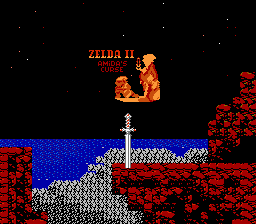
For a game notorious for its difficulty, Zelda II: The Adventure of Link has a lot of romhacks, most of which up the challenge level still more. Amida’s Curse is more of a difficulty level in keeping with the original, which is nice, and has some interesting ideas in it.
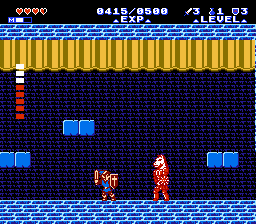
Due to controller issues (PowerA’s cheaper wired version of the Switch Pro Controller has decided to mess up in frustrating ways) I have yet to play through the whole thing, but what I’ve seen has some interesting decisions. Amida’s Curse throws out the wandering monster encounters completely; there is no reason I can see to not wander around the landscape wherever you want. In fact you definitely should try to wander around a fair bit, for the game has bunches of secret areas waiting to be found throughout the landscape, hiding heart and magic containers, experience gems (which are a reskinned version of the original game’s P-bags) and sometimes required things.
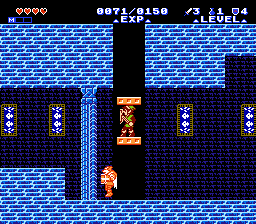
Amida’s Curse has a bit more terrain to cover than stock Zelda II. It’s got more towns (which are much smaller, a good change) and dungeons, and is split up more by item gating than before. In the first town you have to find a key, this lets you get the candle out of a cave, this lets you see in a cave leading to the next area, which has a dungeon with a Power Bracelet that lets you break blocks, that allows you to go through the next cave, and so on. It feels a bit like you’re being led by the nose, but that is often the style with these kinds of games, and it’s not like Zelda II itself didn’t have a fair amount of it.
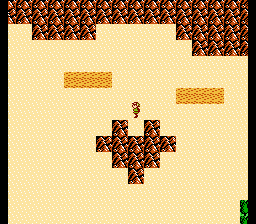
The overworld map takes a cue from the Famicom Disk System version of the game and has animated tiles, but instead of just animating the water, most of the tiles in the overworld are animated now. Towns have smoke coming up from them, and grass blows around. The combat scene graphics have been upgraded a little bit too.
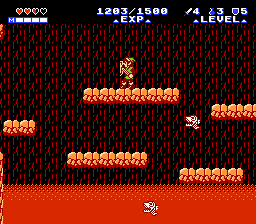
The difficulty balancing is pretty good. Romhacks that resist the urge to make you fight through gauntlets of enemies every step of the way should be lauded. It’s not perfect, I would say, there are places like where you have to jump over a skeleton on a collapsing passage, or make a big jump while being harassed by birds. And there are places where the design could use a little more work: it’s easy to get stranded in some rooms by falling off an elevator, requiring you to reset it, or in one notable case purposely die, to get yourself unstuck. And if you’re jumping water or lava that comes right up to the landing platform, make sure you clear it by a fair margin, as the game loves to kill you if your foot even grazes the perilous liquid.
Usefully, extra lives found don’t give you a one-time extra try, but increase the number you start each session with, which is a handy little improvement. I think a non-obsessive player can make it through, or at least from what I’ve managed to see. I look forward to trying to get further into this, when my controller isn’t fighting me every step of the way.
Zelda II: Amida’s Curse Homepage – Romhacking.net

“We scour the Earth web for indie, retro, and niche gaming news so you don’t have to, drebnar!” – your faithful reporter
I’m back! I’ve been bobbing and blobbing around internet slimepools and have dredged from their murky depths the latest gaming information for your consumption! Yum!
Engadget’s Kris Holt tells us that the graphic-based Steam version of Dwarf Fortress is on the way! It’ll cost $30, which it is possible to be dismayed by, except that if there’s any game that offers depth and content worth at least $30, it’s Dwarf Fortress. The version will have not only graphics but a tutorial and updated UI! And the free version will continue to be updated! Dwarf Fortress is going with a paid version because its creators, being not electronic dwarves but actual human being people, need money to live. Please, help them to live!
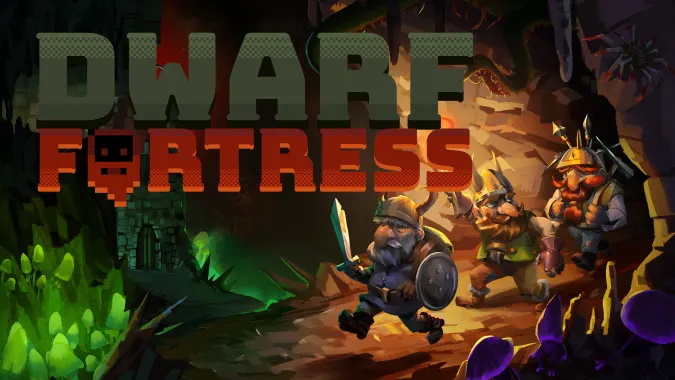
Liam Doolan at Nintendo Life: Mario Party 1 and 2 are coming to Switch Online’s Expansion Pack. I wonder if the games will destroy Joycons as thoroughly as it did N64 joysticks?
K. Thor Jensen for PC Magazine writes about what he considers the 10 worst arcade conversions of all. They cover a number of likely suspects. Atari 2600 Pac-Man, NES 720°, GBA Mortal Kombat, GBA Marble Madness, PC Thunder Blade, Amiga Street Fighter II, NES Ikari Warriors, 2600 Double Dragon, PS1 X-Men vs Street Fighter, and C64 Cisco Heat. But, I dunno, there are a lot of awful computer ports of arcade games floating around out there. Given the time I could probably redo the whole list, but PC Magazine isn’t paying me to do it. Plus, that kind of negativity is more the Gripe Monster’s lawn.
Ryan Dinsdale at IGN tells us that Microsoft loses from $100 to $200 on every Xbox X and S they sell. Aaahahaha! Yes my minions, exult with me in the misfortune of a major console manufacturer, for no good reason than sheer ill will! Er. Sorry, I let the evil out of my brain for a moment there.
At Kotaku, John Walker says that Playstation Plus has lost two million subscribers after its relaunch! Haahaha! Revel in their misfortune! Giant corporations will destroy the earth, at least they suffer very slightly every once in a great while! Oops, sorry again, I really need to get my bile gland emptied more often. The article mentions that the higher-priced tiers mean Sony is actually making more money now anyway.
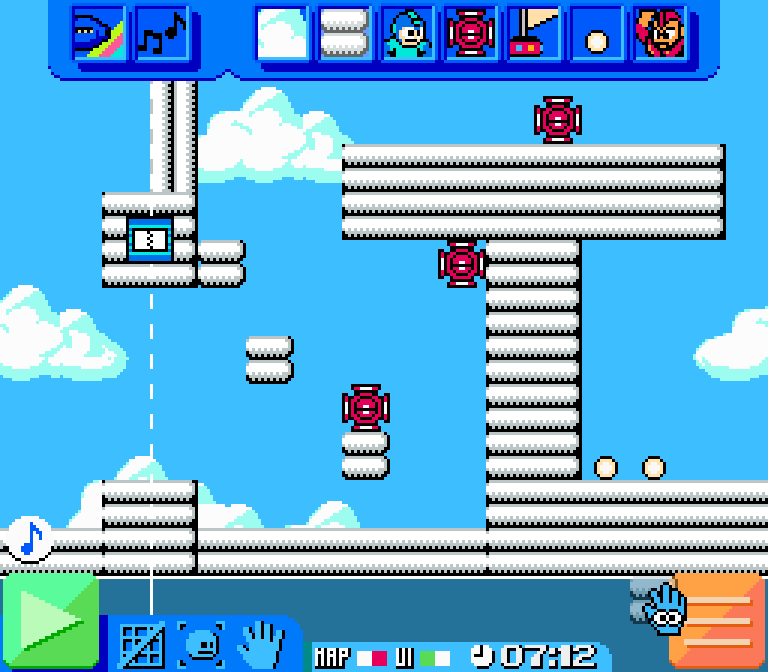
Mega Man Maker (available for PC, Mac and Linux) is a fan project to do for Mega Man what Super Mario Maker does for Mario games, and it’s very well-made! It has a huge variety of levels available on its website to play, although what seems to be an account creation bug makes it difficult to tell you about them from experience. In addition to Mega Man (a.k.a. Rock), it allows Proto Man, Beat, or fan-favorite character Roll to be included in levels, each with their own special abilities.
It has a pretty cool tutorial as well, in which Dr. Wily and Dr. Light explain how the editor works. Their pixel artist really nailed that air of playful malevolence in Dr. Wily, who seems like he’d be fun to know if it weren’t for constantly trying to take over the world. Have a look:



I feel I should mention that it doesn’t contain all of the classic Mega Man series’ enemies and bosses, nor does it allow you to string levels together into a Mega Man adventure itself. As did Super Mario Maker, and SMM2 before its world creator update, it’s focused on designing single levels, although you can make them quite large, even big enough to be a whole adventure in itself.
Version 1.8 is due to come out in a few weeks, with a whole bunch of new features, and its creators have been busy hyping it up. We look forward to trying out the new version!
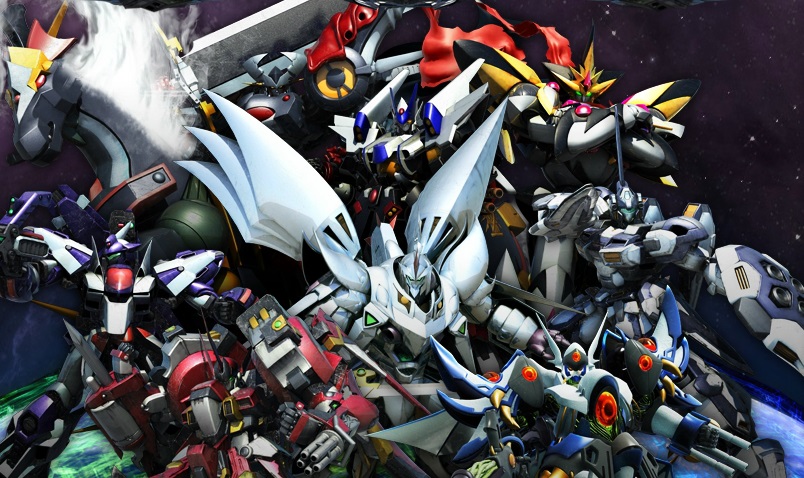
JRPG Junkie looks at the Super Robot Wars series, the mostly-Japan-only giant fighting robots game series with over 70 entries and that crosses over everything (in various games) from Gundam to Full Metal Panic to Cowboy Bebop to Captain Harlock to Gunbuster to Giant Gorg to Evangelion to The Big O. The article, which is far far more knowledgeable about it than I am, is an excellent place to start with this extremely prolific series.
Some of the Switch versions of these games have English translations built-in, and because you can log onto any region’s store on the Switch, those particular versions can be enjoyed by English-speaking players the world over. But there are tons of these games, and many have fan translations, if you’re willing to jump through those particular mechanized, articulated hoops.
Where To Start With Super Robot Wars
It’s Halloween, so let’s review a slightly spooky European computer game that got remade as a Gameboy title with an awesome soundtrack: Bubble Ghost!
It’s kind of a riff on Marble Madness, in that you’re controlling a round object with momentum-based movement through a perilous made of obstacles. But you don’t control it directly: instead, you play the part of an incorporeal spirit that imparts motion to the object, a fragile soap bubble, by applying its ghostly breath. This whimsical concept backs a wonderful little action game. All the versions are pretty much the same game, and they’re all pretty short, with just 36 single-screen levels, but it takes a lot of skill to guide your wobbly ward through the whole maze.
The ghost can pass harmlessly through objects, and the amount of motion applied to the bubble by your breath depends on how close you are to it, which gives you a fine amount of control over its passage if you’re skillful enough.
The Commodore 64 version (below) has jerkier motion for the bubble than other versions, but has atmospheric sound:
The Amiga version is pretty representative of most of the 16-bit versions:
The Gameboy version was implemented by Japanese programmers, has a cuter protagonist and graphics all around, has great music, and an actual ending (though it’s still really brief), but it’s still the same game:
Protomagicalgirl did a speedrun of Gameboy Bubble Ghost at SGDQ2016:
There’s also versions for Atari ST (has an option to play its music out the MIDI port!), MS-DOS, Amstrad (some funky screen trasitions in this one), Apple II GS (not a complete play) and Windows (from 2003, also not a complete play, and has the flair of a bootleg clone). It’s also on Steam, released there in 2018, although that seems to be a direct recreation, maybe even emulation of the DOS version, which is one of the worse versions, with terrible sound.
According to Mobygames, Infogrammes remade the game as Bubble+ on some platforms, and didn’t pay the creators for sales of those versions! I don’t know if the creators get anything from the Steam port.